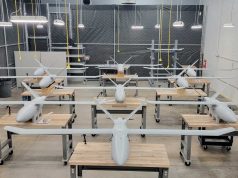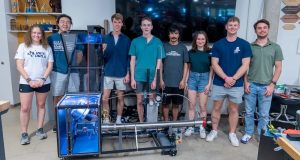Bioprinting specialist Vital3D has demonstrated its skills with a 2 mm high 3D-printed Christmas tree scaffold. Bioprinting technology promises to have a significant impact on organ transplantation and the reduction of animal testing in drug development.
Bioprinting, an area of 3D printing, has achieved significant milestones, including the successful transplantation of small 3D printed heart tissues into animals, the development of 3D printed kidney models for disease research, advances in liver tissues for drug testing and the production of skin for burn treatments. Progress has been made in the field of cartilage printing in particular, which could find applications in joint and ear reconstruction.
Vital3D stands out in this advancing landscape. They use femtosecond laser-based two-photon polymerization technology to address challenges such as maximizing organoid size, complexity and cell type diversity. Their most recent project, a 2 mm Christmas tree, demonstrates not only the precision of their technology, but also the potential for complex, functionalized scaffolds that provide ideal environments for cell growth.
Dr. Linas Jonušauskas, Chief Technology Officer at Vital3D Technologies, emphasizes the significance of this development: “Our Christmas tree scaffold, while playful, represents a serious step forward. It’s a clear demonstration of the ability to create structures that support cell growth in more intricate and specialized ways. This rudimentary square scaffold is just the beginning. Our future work involves functionalized biopolymers and arbitrarily shaped 3D structures, pushing organoid research beyond its current limits.”
The future of bioprinting extends far beyond the creation of complex organoids. One of the most promising areas of application is in organ transplantation. By advancing the technology to create viable, functional organs, bioprinting could revolutionize transplant medicine and provide solutions to organ shortages and compatibility issues.
Bioprinting also has the potential to significantly reduce animal testing in drug development by providing more accurate human tissue models for more effective and personalized drug testing.
Dr. Jonušauskas adds, “Bioprinting is not just about creating structures; it’s about creating hope and solutions. From addressing organ transplant needs to reducing reliance on animal testing, the possibilities are vast.”
Subscribe to our Newsletter
3DPResso is a weekly newsletter that links to the most exciting global stories from the 3D printing and additive manufacturing industry.























